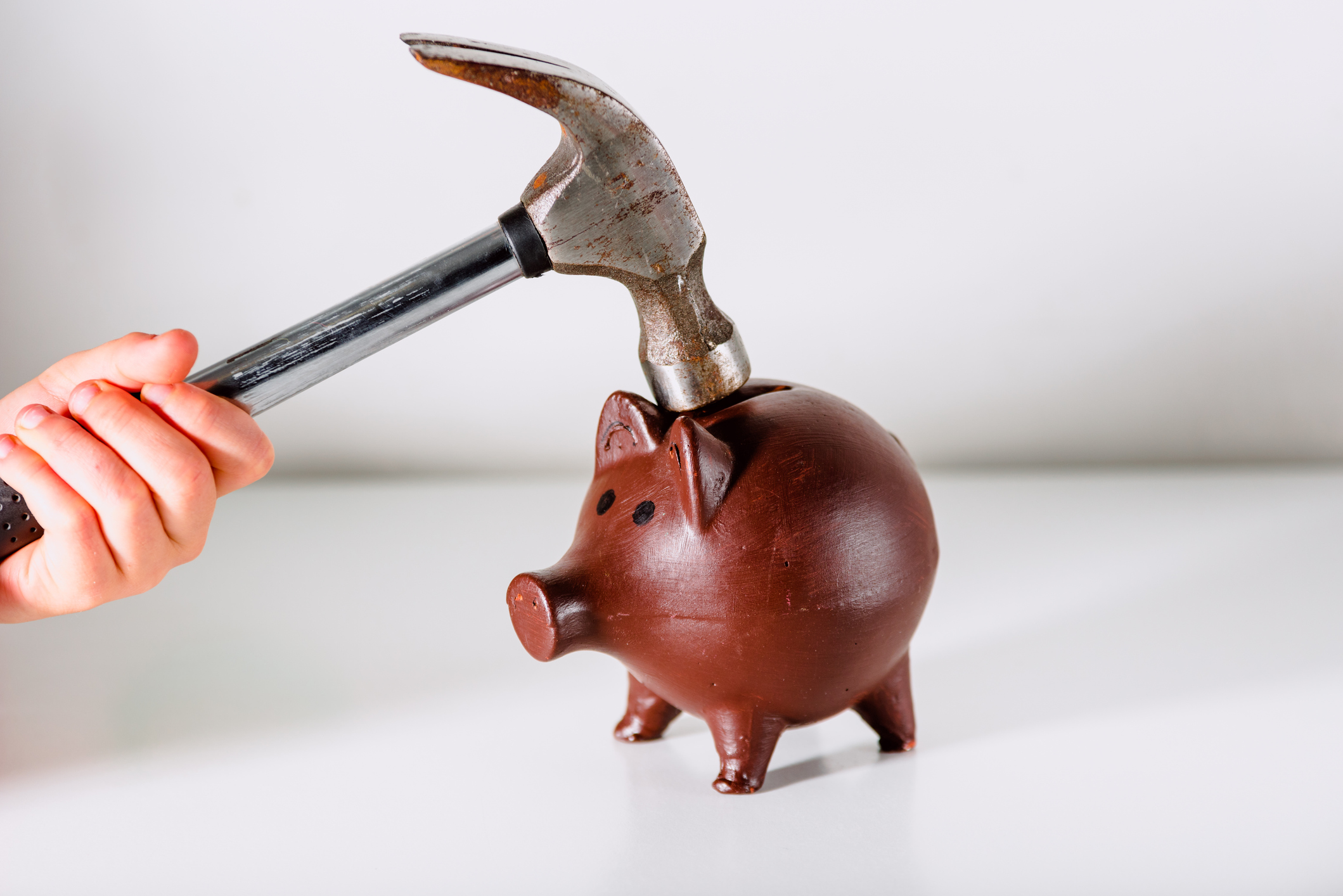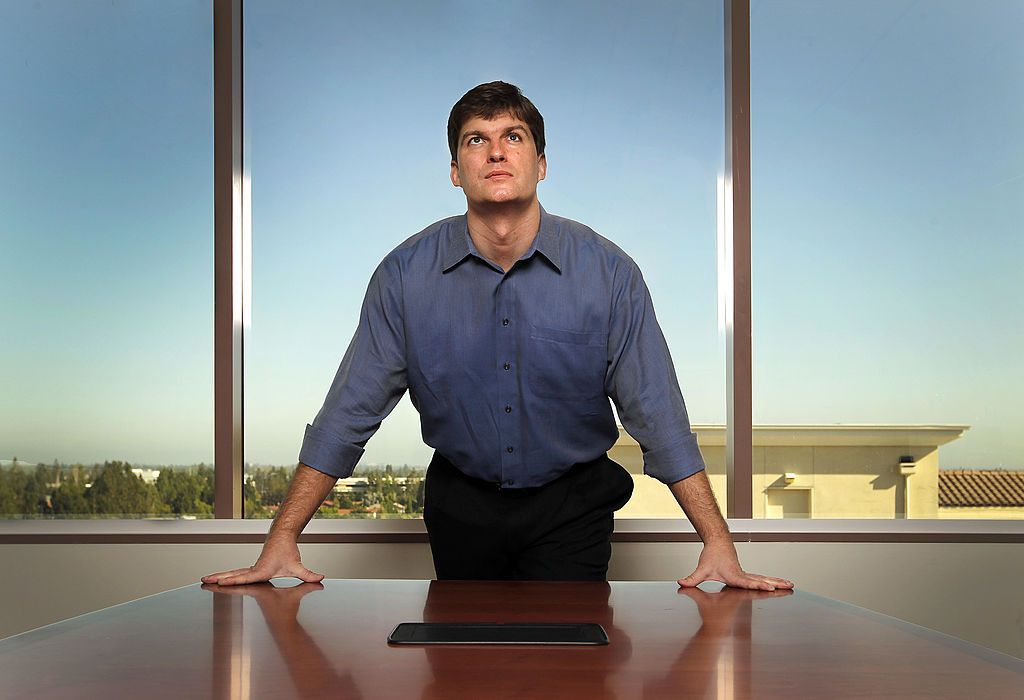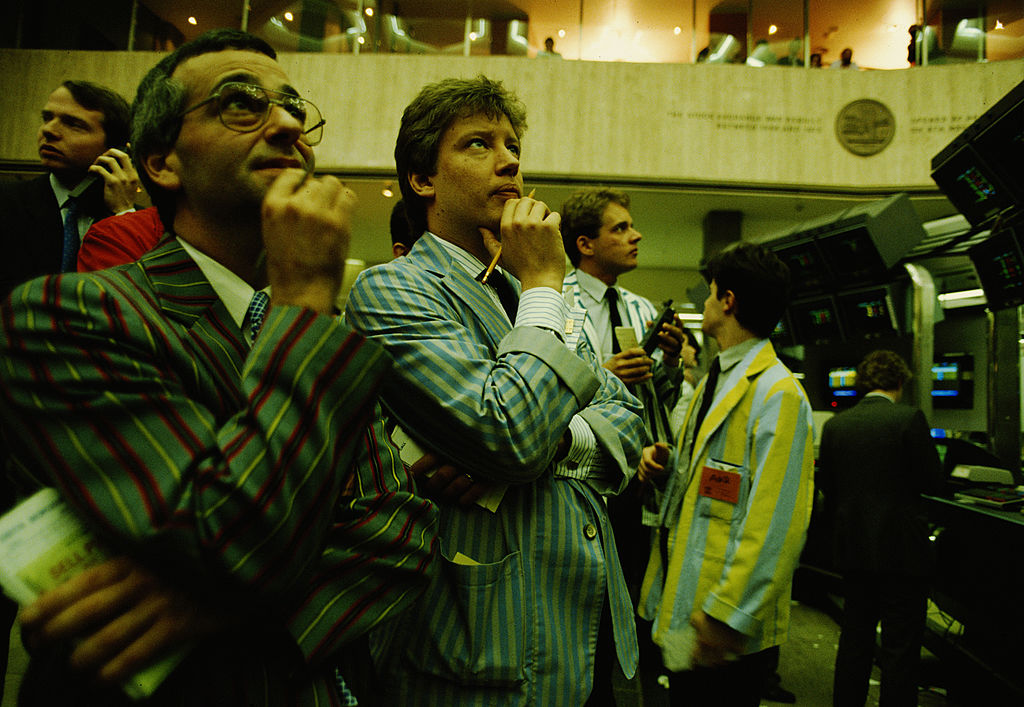Forever young: investment opportunities in supporting an ageing population
Ageing populations have prompted fruitful research in sectors ranging from pharmaceuticals and medical equipment to glasses and hearing aids.


The demographics of developed countries are undergoing significant change. The percentage of the population aged over 65 is on the rise. The figure is already 29% for Japan, 24.5% for Italy, 19% for the UK and 16% for the US. The UK percentage is up from 11% in 1951 and projected to rise to 25% by 2050. The proportion of those aged 80 or over is set to double by 2063 to 6.3 million. Globally, there are expected to be 2.1 billion people over 60 by 2050.
The number of over-65s in G7 countries is increasing because of health education (there are fewer smokers, for instance), preventative healthcare, higher living standards, better diets, better public health and improved treatments for diseases and afflictions of old age. There has been a steady decrease in deaths from cancer and heart disease. Average life expectancy in G7 countries varies from 79.5 years for the US to 84.9 for Japan. But these average figures hide big differences between well-educated people and manual workers. A Spanish study found a ten-year difference between the two.
The large and increasing number of older people opens up growing market opportunities for health companies in three main areas: drugs to treat the diseases of old age, such as cancer and arthritis; replacement body parts, such as hip and knee joints; and aids for the senses, such as spectacles, hearing aids and treatments for degenerative eye diseases.
MoneyWeek
Subscribe to MoneyWeek today and get your first six magazine issues absolutely FREE

Sign up to Money Morning
Don't miss the latest investment and personal finances news, market analysis, plus money-saving tips with our free twice-daily newsletter
Don't miss the latest investment and personal finances news, market analysis, plus money-saving tips with our free twice-daily newsletter
What are the leading causes of death?
The five main causes of death in the over-65s are, in order of importance, heart disease, cancer, stroke, respiratory diseases and Alzheimer’s. To these should be added obesity, since it raises the risk of heart disease (by 28%), cancer (by 20%) and Alzheimer’s (by 30%). The number of people with Alzheimer’s is predicted to double by 2040. In this article, we take as examples recent advances in the treatments for cancer, Alzheimer’s and obesity. We also mention arthritis since this can seriously limit the mobility and activities of the over-65s, with rheumatoid arthritis cases predicted to increase by 80% from 2020 to 2050.
Treatments for these four diseases are all growth markets. The cancer drug market is expected to grow from $210 billion in 2023 to $518 billion in 2032, with the Alzheimer’s drug market expanding from $4 billion in 2022 to $17 billion in 2030. The market for obesity drugs is expected to rocket from $6.6 billion in 2023 to $150 billion by the early 2030s. The market for arthritis drugs is set to swell from $25 billion in 2023 to $50 billion by 2030.
The most common cancers in the over-65s are lung cancer and prostate cancer in men, and breast cancer and colorectal cancer in women. Around 40% of breast cancers are diagnosed in women over 65. Advances in immunotherapies have given oncologists new drugs for lung cancers, such as Keytruda from Merck, Opdivo from Bristol-Myers Squibb, Tecentriq from Roche and Imfinzi from AstraZeneca.
Aggressive prostate cancer is difficult to treat, but a new drug from AstraZeneca (AZD5305) has proved very effective in clinical trials. The most common breast cancer in older women is hormone-receptor positive (HR+) tumours, for which a common treatment is Pfizer’s Ibrance. Some patients can be resistant to Ibrance, but recent trials show that AstraZeneca’s AZD4573 combined with Ibrance is effective in these cases. Roche also has drugs for HR+ breast cancer. Immunotherapies for colorectal cancer include Keytruda and Opdivo. Roche and AstraZeneca both have strong cancer pipelines.
Has there been progress in treating Alzheimer's?
No effective Alzheimer’s drugs were available and no new drug had been developed for 18 years until Biogen’s aducanumab was approved by America’s Food and Drug Administration (FDA) in 2021. This was quickly followed by a better drug called lecanemab, from pharma groups Biogen and Eisai. It was approved by the FDA in 2023 as it both reduces amyloid plaques (clumps of protein often associated with the disease) and slows the cognitive decline Alzheimer’s causes.
These were followed by last year’s approval of Eli Lilly’s donanemab, which is slightly more effective in reducing cognitive decline. Alzheimer’s causes psychotic symptoms in the over-65s, but the other main cause is psychosis schizophrenia, which is becoming increasingly common in this age group. There had been no news for treating schizophrenia for decades until a new and effective drug, Cobenfy (from Bristol-Myers Squibb), was approved in September 2024. Another promising new pipeline drug for schizophrenia from AbbVie failed its clinical trials in November.
Tackling obesity, eye disease and arthritis
Given that the risks of heart disease, cancer, diabetes and Alzheimer’s all increase substantially with obesity, it is concerning that 41.5% of Americans over 60 are obese. The advent of effective weight-loss drugs in recent years is therefore a step forward in reducing the risk of death. Weight-loss drugs were developed from drugs to treat type-2 diabetes, such as Novo Nordisk’s Ozempic, which, in a higher dose form, is sold as Wegovy for weight reduction.
Ozempic was FDA-approved in 2017 and Wegovy in 2021 and sales of both are currently limited by manufacturing capacity. Eli Lilly was the second company to enter this field, with Mounjaro for diabetes, approved in 2022, and Zepbound for weight-loss approved in 2023.
Age-related macular degeneration (AMD) is the main cause of vision loss in older people. AMD is now treated with drug injections, which used to be given monthly, but new drugs can be administered every two to four months, such as Roche’s Vabysmo for wet AMD (every four months) and Apellis’s Syfovre for dry AMD (every two). A new gene therapy from AbbVie (ABBVRGX-314) enables the eye to produce medicine on its own and should greatly reduce the need for injections.
Serious arthritis is common among the over-65s and can greatly limit activity and mobility. That is why AbbVie’s Humira treatment for rheumatoid and psoriatic arthritis, as well as for psoriasis, became the world’s best-selling drug and, in 2022, the first drug ever with annual sales over $20 billion. Its patent expired in 2023 so generic competition then reduced sales, but AbbVie has developed the new and improved drugs Rinvoq and Skyrizi, also for rheumatoid and psoriatic arthritis and psoriasis. They are rapidly increasing their sales and together racked up revenue of $4.8 billion in the third quarter of 2024, a year-on-year increase of 48%. Investment options among the pharma giants mentioned above include AbbVie, AstraZeneca, Eli Lilly, Novo Nordisk and Roche, all of which have well-stocked new drug pipelines.
Developments in hip and knee replacements
The next category of medical advances helpful to older people is that of replacement body parts, such as hip and knee joints, heart pacemakers, stents for artery repair, replacement heart valves and spinal repair systems. Medtronic is a major supplier of the last four items and many others. It provides pacemakers that are MRI-scanner safe, a range of stents, mechanical and prosthetic heart valves and systems for repairing compression fractures of vertebrae. Abbott Laboratories and Boston Scientific also provide stents, heart valves and pacemakers. The market for cardiac-implantable electronic devices (which includes pacemakers) is expected to grow from $28 billion in 2023 to $47.4 billion by 2030.
The prevalence of total hip and knee replacements increases sharply with age so that by age 80, 5.3% of Americans have hip replacements and 10.4% have knee replacements. The major companies providing replacement joints are Stryker Corporation, Zimmer Biomet, DePuy Synthes (Johnson & Johnson) and Smith & Nephew. Zimmer is the global market leader in the large joint-replacement market, followed by Stryker. The global market size is expected to rise from $20.5 billion in 2023 to $25.7 billion in 2030. Medtronic, Boston Scientific, Zimmer and Stryker are our top-four companies in the area of body-part replacements.
Expanding into the glasses and hearing aids market
Vision and hearing both deteriorate with age and around 85% of over-65s wear glasses, with only a small percentage choosing contact lenses. Hearing-aid use is lower, with 19.2% of men over 65 using an aid compared with only 10.6% of women. EssilorLuxottica is the global market leader in glasses with 150 brands, including Ray-Ban, Oakley, Prada and Swarovski. Its market share is 36% in Europe and 47% in North America. It is also the world’s largest maker of corrective lenses, with a 42% market share.
EssilorLuxottica has introduced a series of innovative products, including its Ray-Ban Meta smart glasses, Stellest myopia-management lenses and Nuance audio glasses, which are soon to be launched and incorporate a hidden hearing aid into fashionable spectacle frames. Prototypes were demonstrated at the 2024 Consumer Electronics Show in Las Vegas.
The global market leader in hearing aids is Sonova International of Switzerland, with brands such as Phonak, Unitron and Hansaton. Its global market share is 31%. The second-largest player is Starkey Hearing Technologies, a private company with premium products that incorporate AI into hearing aids to provide wireless connectivity, voice commands and health tracking. Demant and WS Audiology, a private company, are also significant players.
For patients who are profoundly deaf or severely hard of hearing, a cochlear implant rather than a hearing aid is required. The implant converts sound into electrical signals that are fed directly into the auditory nerve. Cochlear Limited, an Australian company and market leader, is said to make the most reliable implants, followed by Advanced Bionics, a subsidiary of Sonova. EssilorLuxottica, Sonova and Cochlear are potential investments in glasses and hearing aids.
How have the top players in the healthcare industry performed?
We have mentioned above several companies in different fields of healthcare, and we now look at their growth rates and financial performance. In alphabetical order within their categories, the main options are AbbVie, AstraZeneca, Eli Lilly, Novo Nordisk and Roche in pharmaceuticals; Boston Scientific, Medtronic, Stryker and Zimmer in medical devices; and finally Cochlear, EssilorLuxottica, and Sonova in glasses and hearing aids.
Bristol-Myers Squibb and Merck unfortunately both have blockbuster drugs nearing patent expiry – Bristol has three blockbuster patents expiring in 2026-2029 and Merck has Keytruda, which makes up 45% of total revenue, expiring in 2028. These patent expiries raise the risk for both stocks. The forward dividend yields of these 12 firms range from AbbVie and Roche at 3.5% to Lilly’s 0.8% and Boston Scientific’s 0%. We now summarise some key indicators for the 12 companies.
AbbVie has strong positions in immunology, aesthetics (Botox and next-generation fillers), oncology and neuroscience. However, revenue and profit were down in 2023 as AbbVie adjusted to the patent expiry of Humira. AbbVie has a market value of $301 billion, a forward price/earnings (p/e) ratio of 14.6, and a yield of 3.7%.
AstraZeneca is particularly strong in oncology, but also in the cardiovascular, renal, respiratory and rare-disease sectors. Since 2023, its operating profit has nearly doubled. AstraZeneca’s market capitalisation is £168 billion. It has a forward p/e of 13.9 and a yield of 2.2%.
Eli Lilly is the second company to win approvals in the new growth areas of obesity and Alzheimer’s. It is also strong in diabetes, immunology and oncology (following the acquisition of Loxo Oncology). Both revenue and operating profit were up approximately 20% from 2022-2023. Eli Lilly’s market cap is $672 billion, the forward p/e is 33 and the yield is 0.8%.
Novo Nordisk is a global leader in diabetes, obesity and rare blood and endocrine diseases; it is also exploring other areas. Both revenue and profit were up over 30% in 2023. Novo has a market cap of DKK2.7trn (£306 billion), a forward p/e of 20.9 and a yield of 1.7%. A decline in share price from June to November 2024 was caused by both second and third-quarter results not meeting analysts’ expectations, along with increasing competition from Eli Lilly and the prospect of other companies planning to enter the market.
Roche is strong in oncology, neuroscience, cardiovascular and rare diseases, and in diagnostics (this division comprises 20% of overall revenue). Roche’s revenue and operating profit were down by 8% and 12% respectively from 2022-2023, with the drop in demand for Covid tests and treatments, along with the appreciation of the Swiss franc, being the major culprits. Roche’s market cap is SFr214 billion (£192 billion), its forward p/e is 12.5, and it yields 3.6%.
Boston Scientific has seen strong growth in recent years, with revenue up 12% and operating profit up 19% in 2023. Boston has a market cap of $143 billion, a forward p/e of 34, and no yield. Medtronic, on the other hand, saw revenue rise less than 4% and operating profit fall more than 5% from 30 April 2023-30 April 2024. Medtronic has a market value of $110 billion, a forward p/e of 14.6, and a comparatively high yield of 3.2%.
Zimmer did rather better than Medtronic, with revenue up 6.5% and operating profit up 22% in 2023. Zimmer has a market cap of $21 billion, a forward p/e of 12.2 and a yield of 0.9. Stryker did even better, with revenue up 11% and operating profit up 29% from 2022-2023. Stryker has a market cap of $141 billion, a forward p/e of 26.9, and a yield of 0.9%.
EssilorLuxottica’s revenue was up only 3.7% and operating profit was up only 0.7% from 2022-2023. However, the first three quarters of 2024 saw revenue up 4% over the prior year, and the company said it expected revenue to accelerate from the three innovations mentioned above. EssilorLuxottica has a market cap of €108 billion, a forward p/e of 30.4, and a yield of 1.7%.
Sonova’s revenue and profit were down a little from 2022-2023, with headwinds from the strength of the Swiss franc and the loss of a contract with a US customer. Sonova has a market cap of SFr18.1 billion (£16.2 billion), a forward p/e of 22.8, and a yield of 1.4%. Cochlear, on the other hand, saw a 15% increase in revenue and an 18% increase in profit for the year to 30 June 2024. Cochlear has a market cap of A$20.1 billion (£10.2 billion), a forward p/e 47, and a yield 1.4%.
Where to invest now
The figures above suggest that Cochlear Limited (Sydney: COH), a growth company, is rather expensive, but consider buying it when the price is lower relative to earnings. EssilorLuxottica (Paris: EL), despite a fairly high p/e, has potential as its new innovations are marketed and sales grow. Boston Scientific (NYSE: BSX) has further growth potential, while Stryker Corporation (NYSE: SYK) is a better bet for growth than Zimmer. Medtronic (NYSE: MDT) is useful as a steady income stock with a decent dividend and a consistent history of increasing dividends.
Roche (Zurich: ROG) is another steady dividend stock. AbbVie (NYSE: ABBV) and AstraZeneca (LSE: AZN) are probably the safest pharmaceutical picks with modest p/es and decent yields with Novo Nordisk (Copenhagen: NOVO-B) and particularly Eli Lilly (NYSE: LLY) on much higher p/es, but potentially higher growth. Lilly has recently been doing well in the diabetes and obesity markets and has a higher p/e, but more diverse product range than Novo. However, keep an eye on clinical trial results for both since better-performing new diabetes and obesity drugs could enable either one to pull ahead.
This article was first published in MoneyWeek's magazine. Enjoy exclusive early access to news, opinion and analysis from our team of financial experts with a MoneyWeek subscription.
Get the latest financial news, insights and expert analysis from our award-winning MoneyWeek team, to help you understand what really matters when it comes to your finances.
Highly qualified (BSc PhD CPhys FInstP MIoD) expert in R&D management, business improvement and investment analysis, Dr Mike Tubbs worked for decades on the 'inside' of corporate giants such as Xerox, Battelle and Lucas. Working in the research and development departments, he learnt what became the key to his investing; knowledge which gave him a unique perspective on the stock markets.
Dr Tubbs went on to create the R&D Scorecard which was presented annually to the Department of Trade & Industry and the European Commission. It was a guide for European businesses on how to improve prospects using correctly applied research and development.
He has been a contributor to MoneyWeek for many years, with a particular focus on R&D-driven growth companies.
-
 How to tap into AI energy stocks
How to tap into AI energy stocksOne certainty about generative AI is that it is hugely energy-intensive. Companies providing that power look set to capture the benefits.
-
 Will HMRC block money market funds from the stocks and shares ISA allowance?
Will HMRC block money market funds from the stocks and shares ISA allowance?Cautious investors looking for cash-like returns could be prohibited from using money market funds in a stocks and shares ISA under new ISA rules from HMRC. What could it mean for you?
-
 Big Short investor Michael Burry closes hedge fund Scion Capital
Big Short investor Michael Burry closes hedge fund Scion CapitalProfile Michael Burry rightly bet against the US mortgage market before the 2008 crisis. Now he is worried about the AI boom
-
 The global defence boom has moved beyond Europe – here’s how to profit
The global defence boom has moved beyond Europe – here’s how to profitOpinion Tom Bailey, head of research for the Future of Defence Indo-Pac ex-China UCITS ETF, picks three defence stocks where he'd put his money
-
 Profit from a return to the office with Workspace
Profit from a return to the office with WorkspaceWorkspace is an unloved play on the real estate investment trust sector as demand for flexible office space rises
-
 New frontiers: the future of cybersecurity and how to invest
New frontiers: the future of cybersecurity and how to investMatthew Partridge reviews the key trends in the cybersecurity sector and how to profit
-
 An “existential crisis” for investment trusts? We’ve heard it all before in the 70s
An “existential crisis” for investment trusts? We’ve heard it all before in the 70sOpinion Those fearing for the future of investment trusts should remember what happened 50 years ago, says Max King
-
 8 of the best properties for sale with wildlife ponds
8 of the best properties for sale with wildlife pondsThe best properties for sale with wildlife ponds – from a 16th-century house in the Ashdown Forest, to a property on Pembrokeshire’s Preseli Hills
-
 Why a copper crunch is looming
Why a copper crunch is loomingMiners are not investing in new copper supply despite rising demand from electrification of the economy, says Cris Sholto Heaton
-
 Where to look for Christmas gifts for collectors
Where to look for Christmas gifts for collectors“Buy now” marketplaces are rich hunting grounds when it comes to buying Christmas gifts for collectors, says Chris Carter
